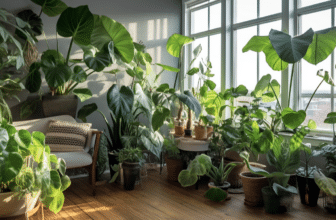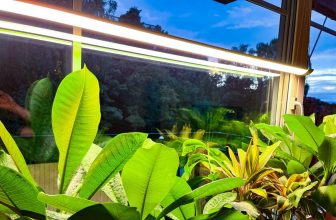
I’ve been seeing a lot of those videos and posts floating around about whipping up the perfect plant food right from our kitchen scraps. Everything from banana peels to onion skins and coffee grounds is being touted as the best kept secret in plant nutrition. And I’ll be honest, some of these ideas seemed pretty reasonable to me, while others… well, let’s just say I was a bit skeptical.
So, what’s a curious plant lover to do? I decided it was time to dig a little deeper (😜) and see if there’s any real science behind these homemade plant food recipes. Here’s a rundown of the most common “recipes” I’ve come across. If you’ve heard of any others or have your own concoctions to share, drop a comment below. I’m all ears!
Banana peels
Eggshell
Coffee grounds
Rice and pasta water
Aquarium water
Weeds and grass clippings
Wood ash
Onion and garlic peel tea
Compost tea
Epsom Salt
One brew to rule them all
🍌Going Bananas for Plants: Banana Peel Tea

🗣️Claims
The internet is abuzz with claims that banana peel tea serves as an excellent homemade fertilizer, rich in potassium, phosphorus, and other essential nutrients that supposedly promote healthy plant growth and flowering.
🍲🧙♀️Recipes and Preparation
The most common recipe involves soaking banana peels in water for a few days to create a nutrient-rich “tea.” Some variations suggest boiling the peels to expedite the process, while others recommend blending the peels with water to create a more concentrated solution.
🔬What Does Science Say?
Banana peels are indeed a good source of potassium, a vital nutrient for plant health, especially for flowering and fruiting. They also contain smaller amounts of phosphorus and nitrogen. However, the effectiveness of banana peel tea as a fertilizer depends on the method of preparation and the specific needs of the plant. While potassium is beneficial, an excess can inhibit the absorption of other essential nutrients. Moreover, the nutrient release from banana peels into the water is not instantaneous and varies based on the preparation method.
⚖️Verdict: Plausible
Banana peel tea can be good for plants that like a lot of potassium. But, you have to make and use it the right way, depending on what the plant needs. If you use too much or in the wrong way, it might cause more harm than good by messing up the plant’s nutrients. So, while banana peel tea can help your plants grow, it shouldn’t be the only thing you feed them.
🌱Best Suited for:
- Tropical Houseplants: Great for those that thrive with extra potassium, like Anthuriums and Philodendrons, encouraging vibrant blooms and robust growth.
- Orchids and Bromeliads: These beauties benefit from the potassium boost, helping them produce stunning flowers and maintain healthy foliage.
- Potassium-Hungry Plants: Perfect for indoor plants showing signs of potassium need, such as leaf tips turning brown or weak stems, common in Alocasias and Monsteras.”
🍲✅Proper preparation and use
Proper preparation of banana peel tea involves a few simple steps to ensure it’s beneficial and not harmful to your plants. Here’s a guideline for creating and using banana peel tea effectively:
- Collecting Banana Peels: Save the peels from bananas you consume. Organic bananas are preferable to avoid pesticide residues.
- Chopping or Tearing: Cut the peels into smaller pieces. This increases the surface area, allowing more nutrients to leach into the water during brewing.
- Brewing the Tea: Place the chopped banana peels in a jar and cover them with water. For a standard preparation, use about one banana peel per two cups of water. Seal the jar and let it sit for 48 to 72 hours at room temperature. Avoid longer fermentation as it might lead to undesirable bacterial growth.
- Straining: After the brewing period, strain the liquid to remove the banana peel pieces. The resulting liquid is your banana peel tea.
- Dilution: Dilute the banana peel tea with water before applying it to your plants. A good ratio is 1 part banana peel tea to 5 parts water. This step is crucial to prevent potential nutrient overload and reduce the risk of root burn.
- Application: Use the diluted banana peel tea to water your plants as you normally would. It’s best applied directly to the soil rather than the foliage to avoid any potential leaf burn.
- Frequency: Apply banana peel tea once every 4 to 6 weeks during the growing season. This frequency ensures that plants benefit from the potassium boost without risking nutrient imbalance.
Remember, while banana peel tea is beneficial, it should be part of a broader, balanced fertilization strategy that meets all your plants’ nutritional needs.
❌What could go wrong?
- Overuse: If you apply banana peel tea too frequently or in too high a concentration, it can lead to an excess of potassium. This might inhibit the plant’s ability to absorb other essential nutrients like nitrogen and phosphorus, leading to nutrient imbalances.
- Incorrect Plant Choice: Not all plants have high potassium requirements. For plants that prefer a more balanced or nitrogen-rich diet, such as leafy greens, excessive potassium can hinder their growth and health.
- Ignoring Soil pH: Banana peel tea might slightly alter the pH level of the soil. For plants sensitive to pH changes, this could affect their nutrient uptake, even if the potassium would otherwise be beneficial.
- Neglecting Other Nutrients: Relying solely on banana peel tea can lead to a deficiency in other nutrients. Plants need a balanced diet, including nitrogen, phosphorus, and micronutrients, which banana peels don’t provide in sufficient amounts.
- Improper Preparation: If the tea is not properly diluted, it can be too strong for plants, leading to root burn or other stress-related symptoms.
Using banana peel tea as part of a varied and balanced fertilization plan, considering the specific needs of each plant, is the best approach to avoid these pitfalls.
🐣Eggshell – A Calcium Feast for Your Greens
🗣️Claims
Gardeners and plant lovers often say that crushed eggshells are great for giving plants a calcium boost. They’re supposed to help with soil health, prevent blossom end rot in some plants, and even keep pests away.
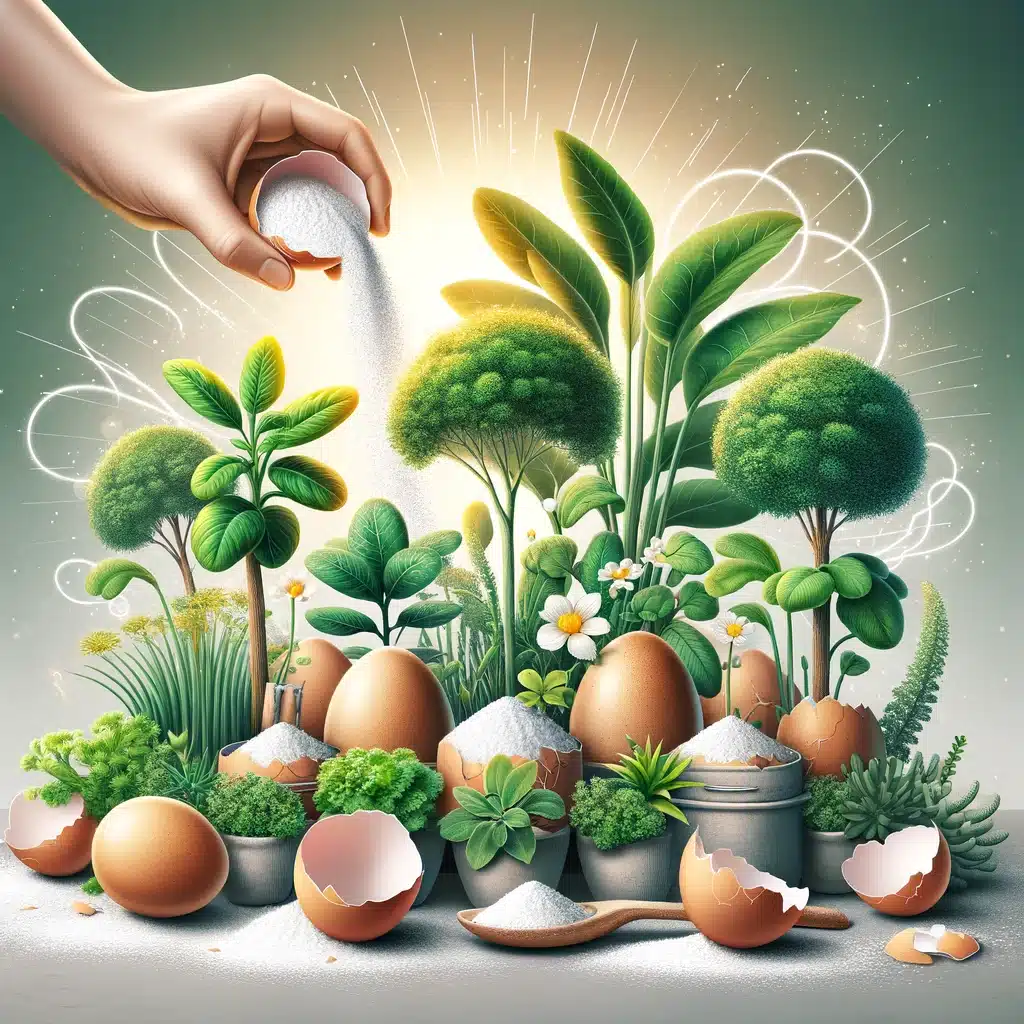
🍲🧙♀️Recipes and Preparation
To use eggshells as fertilizer, clean them, dry them out, and then grind them into a powder. This powder can be sprinkled around your plants or mixed into the soil. Some people also soak crushed eggshells in water to make “eggshell tea” for their plants.
🔬What Does Science Say?
Eggshells are indeed full of calcium, which is essential for plants to build strong cell walls. Calcium helps prevent blossom end rot in plants like tomatoes, but it’s more of a slow-release nutrient. The calcium from eggshells needs time to break down in the soil before plants can use it.
⚖️Verdict: Plausible
Using eggshells can help plants that need a lot of calcium, but it’s not a quick fix. It’s best to use them as part of a bigger plan for feeding your plants, not the only thing you give them.
🌱Best Suited for:
- Tropical houseplants that love calcium, like peace lilies (Spathiphyllum) and calatheas and other Prayer plants.
- Indoor plants showing signs of calcium deficiency, like curling leaves or stunted growth.
🍲✅Proper preparation and use
- Mix finely ground eggshell powder into the soil around your plants.
- Use eggshell tea to water plants that need a calcium boost, making sure to dilute it properly.
❌What could go wrong?
- Using too much eggshell powder or tea might block your plants from getting other nutrients they need.
- Not all plants need extra calcium, so using eggshells for plants that don’t need it won’t help and might even hurt them.
☕️ Perking Up Plants: Coffee Grounds
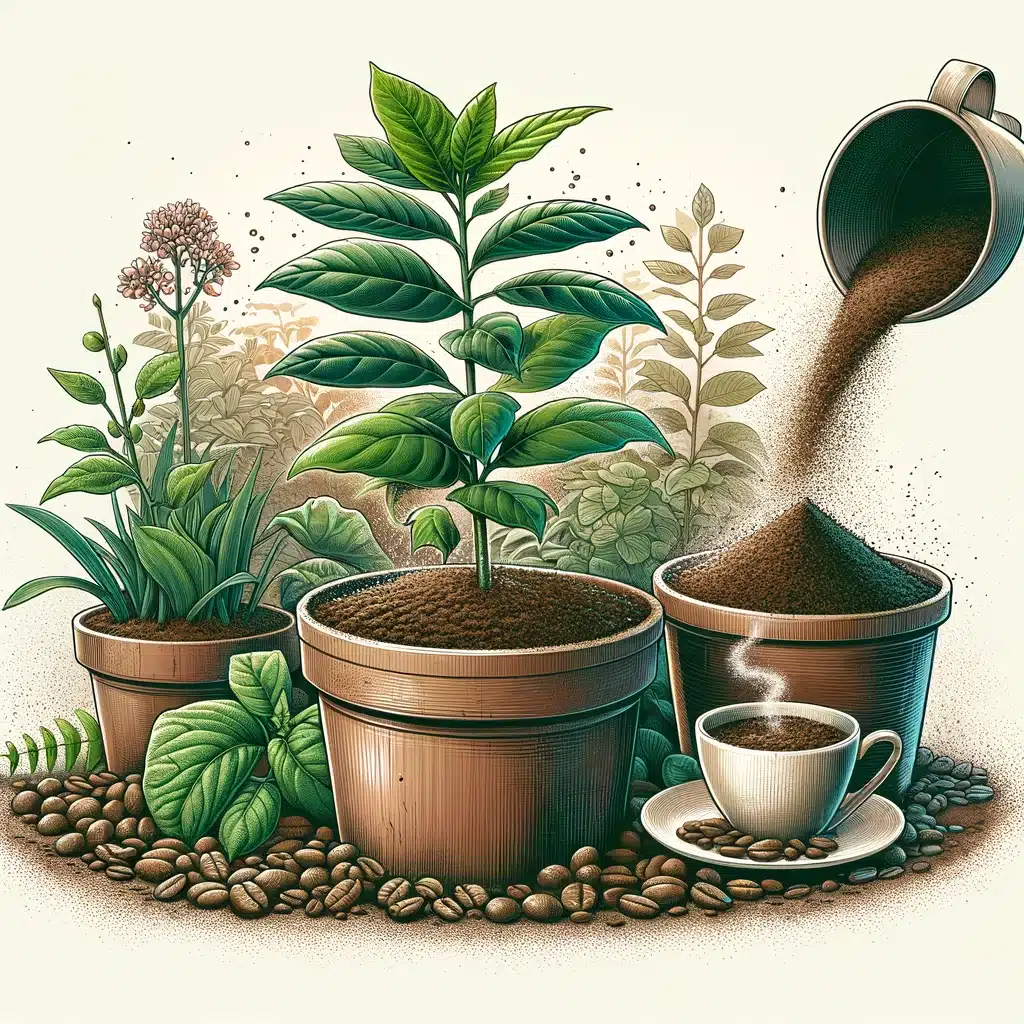
🗣️Claims
Coffee grounds are often celebrated as a garden goldmine, promising to enrich soil, boost plant growth, and deter pests. But do they live up to the hype?
🍲🧙♀️Recipes and Preparation
The common advice is to sprinkle used coffee grounds around plants or mix them into the soil for a slow-release nitrogen kick. Some even brew a diluted coffee “tea” for watering plants, aiming for a mild acid boost and nutrient infusion.
🔬What Does Science Say?
Coffee grounds are indeed rich in nitrogen, vital for plant growth, and can acidify the soil, which benefits acid-loving plants. However, uncomposted grounds may be too acidic and could inhibit some plants’ growth. The nitrogen in coffee grounds releases slowly as they break down, offering more of a long-term benefit than an immediate nutrient hit.
⚖️Verdict: Plausible with Caution
Coffee grounds can be a boon for acid-loving plants needing a nitrogen lift. Yet, they should be composted first or used sparingly. Direct application without composting can lead to soil acidity issues, nutrient imbalances, and even make the soil hydrophobic, as I’ve personally found. A thin layer of grounds can repel water, making it difficult to keep the soil properly moistened.
🌱Best Suited for:
- Acid-Loving Houseplants: Ferns, African Violets, and Philodendrons enjoy slightly acidic soil.
- Foliage Plants: Great for plants like Snake Plants and ZZ Plants, which benefit from the nitrogen for lush leaves.
- Seedlings: A gentle sprinkle in the soil mix can support the growth of young plants with a mild nutrient boost.
🍲✅Proper preparation and use
- Composting: Add coffee grounds to your compost to mellow their acidity and help unlock nitrogen.
- Thin Application: If you’re applying directly, ensure it’s a very thin layer mixed well into the soil to avoid water repulsion.
- Coffee “Tea”: Soak grounds in water overnight for a diluted solution that’s safer for watering plants.
❌What could go wrong?
- Soil Hydrophobia: A layer of coffee grounds can lead to water-repellent soil, making hydration difficult.
- Over-Acidity: Excessive use can overly acidify the soil, harming neutral to alkaline preferring plants.
- Nutrient Imbalance: Fresh grounds can tie up nitrogen, making it unavailable to plants during decomposition.
- Mold Risk: Damp grounds can mold if not properly dispersed or mixed into the soil.
Coffee grounds can enrich your plant care routine when used correctly. However, they’re not a panacea and should be part of a broader, balanced approach to plant nutrition and soil health.
🍚Rice Water & 🍝Pasta Water for Plants
🗣️Claims
The internet advices suggest that water from boiled rice or pasta can benefit plants by providing nutrients released during the cooking process. The belief is that this water, rich in starches and possibly minerals, can promote healthier plant growth.
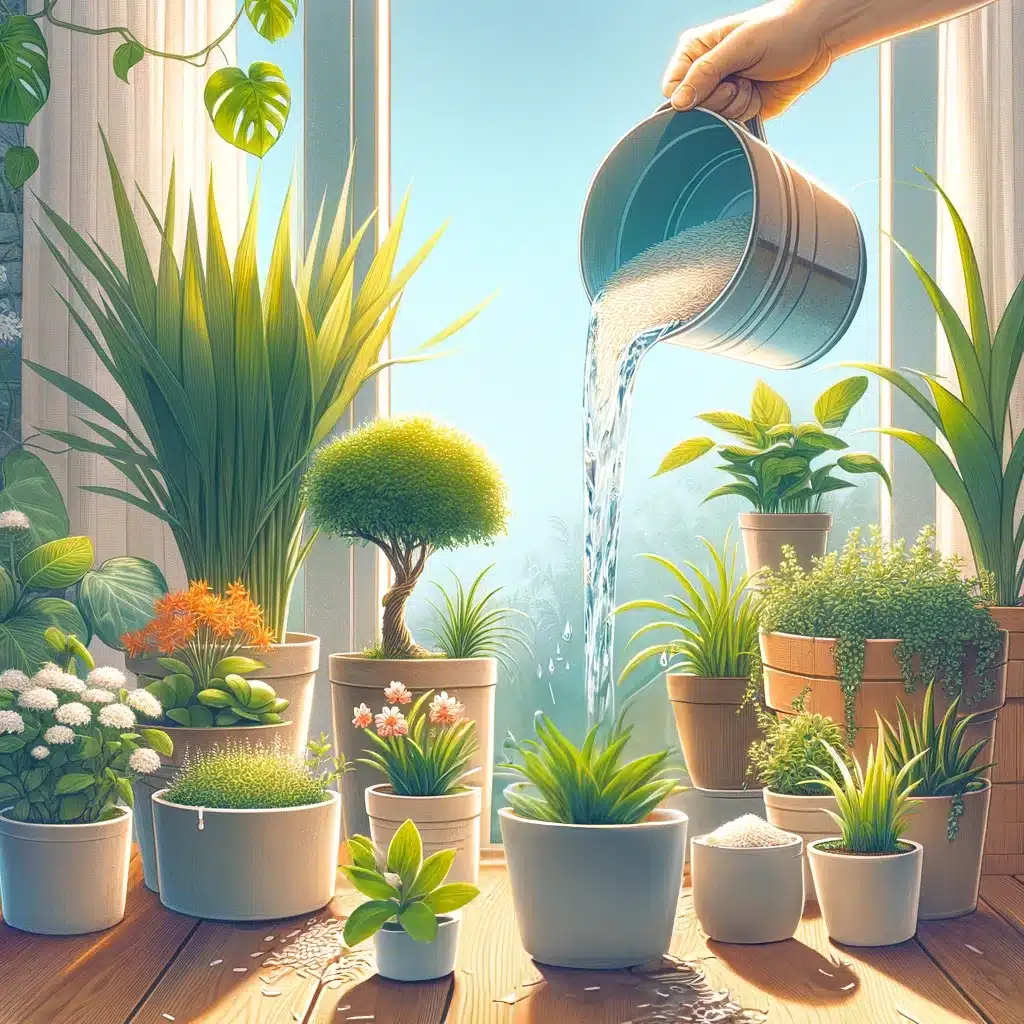
🍲🧙♀️Recipes and Preparation
- Rice Water: After boiling rice, the water is allowed to cool before being used to water plants. It’s often recommended to use water from rice washed prior to cooking, as it’s believed to contain more nutrients.
- Pasta Water: Similar to rice water, the water used to boil pasta (without salt) is cooled and then used for watering plants.
🔬What Does Science Say?
- Nutrient Content: Both rice and pasta water may contain small amounts of nutrients like potassium, magnesium, and phosphorus. However, the concentration of these nutrients is much lower compared to traditional fertilizers.
- Starch Content: The starches in these waters are thought to encourage beneficial microbial activity in the soil, which can aid in plant growth. However, the direct benefit of starch to plants is minimal since plants produce their own starch.
- Research Findings: There is limited scientific research directly addressing the benefits of using rice or pasta water on houseplants. Most of the positive reports are anecdotal or based on the general benefits of using organic matter in gardening.
⚖️Verdict: Plausible, but not very beneficial
While using rice or pasta water can add a minimal amount of nutrients to the soil and potentially support microbial life, it should not be seen as a substitute for a comprehensive plant care regimen. The benefits are likely to be subtle and more related to soil health than direct plant nutrition.
🌱Best Suited for:
- General Houseplants: Particularly those not requiring high nutrient levels.
- Plants in Need of Mild Fertilization: Can be used as a part of a gentle feeding schedule.
🍲✅Proper preparation and use
- Ensure No Salt: Never use water from salted pasta for plants.
- Dilution: Consider diluting the water with plain water to reduce the risk of any potential issues related to over-concentration of starch.
- Frequency: Use sparingly, as part of a varied watering and fertilization routine.
❌What could go wrong?
- Using salted water.
- Overuse: Excessive use of starchy water can lead to soil compaction and reduced aeration over time.
🐠Aquarium Water for Plants

🗣️Claims
Many gardeners and plant enthusiasts claim that water from fish aquariums is an excellent source of nutrients for plants. The idea is that fish waste provides a natural, nitrogen-rich fertilizer.
🍲🧙♀️Recipes and Preparation
There’s no special preparation needed. When you change or clean your aquarium, instead of discarding the water, you use it to water your plants.
🔬What Does Science Say?
- Nutrient Content: Aquarium water can indeed be rich in nitrogen and other nutrients like phosphorus and potassium, thanks to fish waste. These are essential nutrients that support plant growth.
- Beneficial Bacteria: The water may also contain beneficial bacteria that contribute to soil health.
- Research Findings: Studies on the use of aquaponics systems, which combine fish farming with plant cultivation, support the idea that fish waste can be an effective plant fertilizer. However, direct research on using aquarium water for houseplants is less common.
⚖️Verdict: Confirmed
Using aquarium water for plants is a sustainable way to recycle nutrients. It’s particularly beneficial for plants that thrive on the nitrogen available in the water.
🌱Best Suited for:
- Leafy Houseplants: Plants that benefit from high nitrogen levels, such as philodendrons and pothos, will thrive.
- Vegetable Gardens: Edible plants that need a lot of nutrients to grow, like lettuce and spinach, can also benefit.
- Tropical Houseplants: Many tropical plants that require a moist environment and rich soil will respond well to aquarium water.
🍲✅Proper preparation and use
- No Saltwater: Only use water from freshwater aquariums, as saltwater can harm plants.
- Disease-Free Water: Ensure your fish are healthy, and the water is free from any disease or medication that could harm plants.
- Moderation: Use as part of a balanced watering schedule, considering the specific needs of each plant.
❌What could go wrong?
- Over-fertilization: Just like with any fertilizer, overuse can lead to nutrient imbalances. Monitor your plants for signs of excess nitrogen, such as yellowing leaves or stunted growth.
- Chemical Contamination: If you treat your aquarium with chemicals or medications, wait until these have been removed or neutralized before using the water for plants.
In summary, aquarium water is a fantastic, eco-friendly way to provide your plants with essential nutrients, especially nitrogen. It’s a win-win situation where your aquatic pets contribute to your gardening success. Just remember to use it wisely and watch out for any signs of over-fertilization.
🌱Green Tea for Your Garden: Weeds and Grass Clippings Brew
🗣️Claims
Garden enthusiasts claim that a homemade fertilizer made from weeds or grass clippings can provide a nutrient boost to plants. This “green tea” is said to be rich in nitrogen, potassium, and other essential nutrients, promoting healthy growth and vibrant foliage.
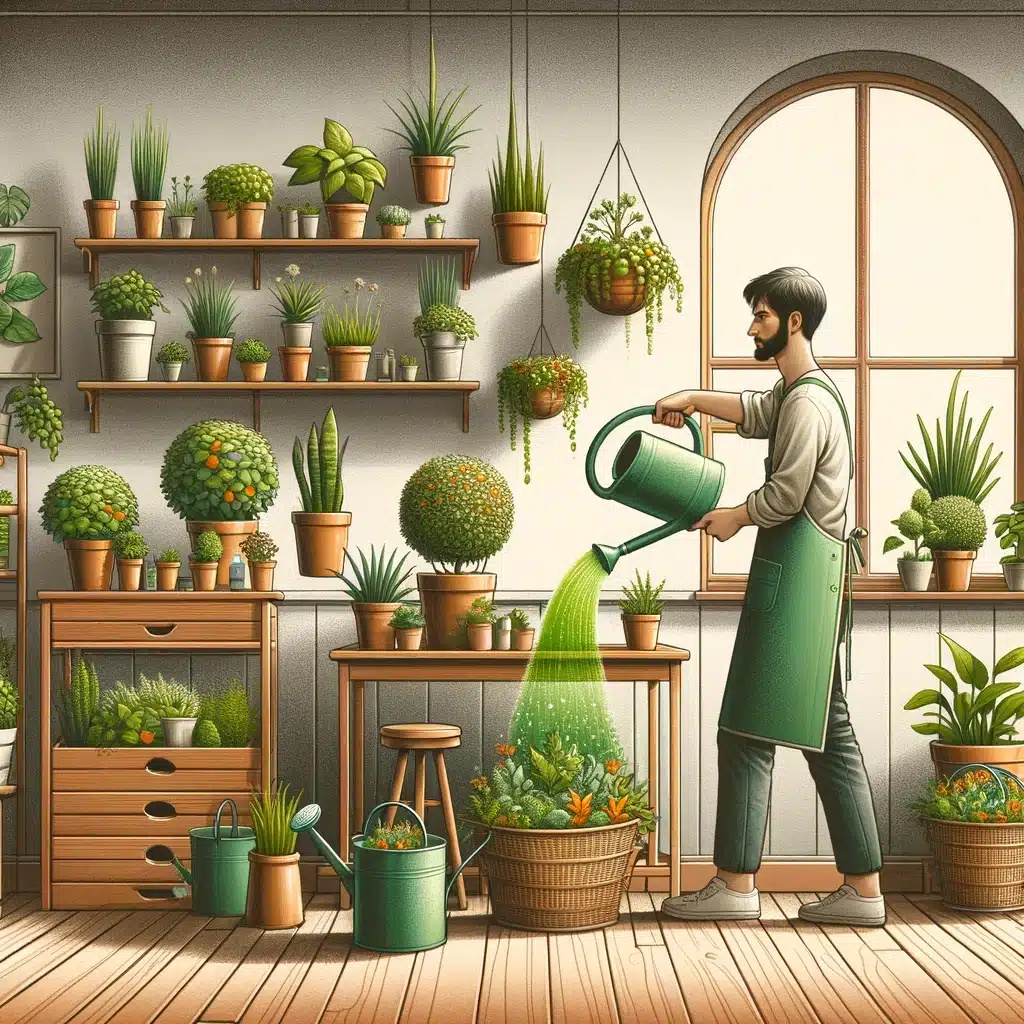
🍲🧙♀️Recipes and Preparation
- Gather Materials: Collect weeds (ensuring they haven’t gone to seed) or fresh grass clippings from your garden.
- Brew the Tea: Place the collected green waste in a large container and cover with water. Allow this mixture to steep for two to three weeks, stirring occasionally.
- Strain and Store: After the steeping period, strain the liquid to remove solids. Your green tea is now ready to use.
🔬What Does Science Say?
- Nutrient Release: Both weeds and grass clippings are rich in nutrients. As they decompose in water, they release these nutrients into the solution.
- Beneficial Microbes: The fermentation process encourages the growth of beneficial microbes, which can improve soil health and help plants absorb nutrients more efficiently.
- Research Foundations: The principles of compost tea are well-documented in horticulture, supporting the idea that decomposing plant matter can benefit plant growth.
⚖️Verdict: Confirmed
Using weeds or grass clippings to make a green tea can be an effective way to recycle garden waste into a valuable plant feed, offering a sustainable source of nutrients.
🌱Best Suited for:
- General Garden Plants: A wide range of garden plants can benefit from the nutrient boost provided by green tea.
- Tropical Houseplants: Tropical varieties that thrive in nutrient-rich conditions, like Musa (bananas) may enjoy the occasional feeding with diluted “green” tea.
- Lawns and Edible Gardens: Grass and vegetable gardens can also benefit from the added nutrients, promoting lush growth and productivity.
🍲✅Proper preparation and use
- Dilution Is Key: Always dilute the green tea with water (roughly 1 part tea to 10 parts water) to prevent nutrient overload.
- Application Method: Apply the diluted solution directly to the soil, avoiding direct contact with leaves to minimize the risk of burn.
- Frequency: Use green tea as a supplement to your regular watering schedule, applying once every 4 to 6 weeks during the growing season.
❌What could go wrong?
- Odor: The brewing process can be smelly; brew your green tea in a well-ventilated area away from your home.
- Weed Seeds: Be cautious to use only weed clippings that haven’t seeded to prevent spreading weeds.
- Nutrient Balance: Remember, green tea should complement a balanced fertilization plan, not replace it.
This green tea, made from weeds and/or grass clippings, offers a fantastic way to turn your garden waste into a treasure, enriching your garden with essential nutrients while promoting sustainable gardening practices.
🔥Turning Wood Ash into Plant Gold

🗣️Claims
Many gardeners swear by wood ash as a great way to add potassium and calcium to the soil, helping to neutralize acidic soils and provide essential nutrients to plants. It’s believed to boost flowering, fruiting, and overall plant health.
🍲🧙♀️Recipes and Preparation
Collect ash from burning hardwood, making sure it’s free from any chemicals or treated wood. Sift it to remove any large chunks or charcoal, and keep the fine ash in a dry, sealed container until you’re ready to use it.
🔬What Does Science Say?
Wood ash is indeed a source of potassium and calcium, and it has an alkaline nature that can help raise soil pH. This makes it useful for sweetening acidic soils. However, the impact of wood ash depends greatly on the soil’s current condition and the plants’ specific needs.
⚖️Verdict: Plausible
Wood ash can be a good addition to your garden, especially for plants that like neutral to alkaline soil. But you need to use it carefully to avoid making the soil too alkaline.
🌱Best Suited for:
- House Plants: Certain house plants that prefer a bit of alkalinity in their soil, like spider plants and African violets, might benefit from a small amount of wood ash.
- Root Vegetables: Like potatoes and carrots, which enjoy the potassium.
- Flowering Plants: Such as roses and peonies, which will appreciate the extra calcium and nutrients.
🍲✅Proper preparation and use
- Check Your Soil: Always test your soil pH before using wood ash. It’s most beneficial if your soil pH is below 6.5.
- Use Sparingly: Sprinkle a thin layer over the soil, then mix it in lightly or water it down. Keep it away from the base of plants.
- Timing Matters: The best time to apply wood ash is in late winter or early spring, giving it time to mix with the soil before the growing season starts.
❌What could go wrong?
- Too Much of a Good Thing: Using too much wood ash can make your soil too alkaline, which can block plants from getting the nutrients they need.
- Not for All Plants: Acid-loving plants won’t do well with wood ash in their soil.
- Watch for Chemicals: Make sure the ash is clean and doesn’t have any harmful chemicals that could hurt your plants or soil.
Examples of acid-loving plants: Ferns, Gardenias, Rhododendrons and Azaleas, Camellias, Hydrangeas, Magnolias, Blueberries.
Using wood ash in your garden or for your house plants can be a smart way to recycle a natural byproduct into something beneficial. Just be sure to apply it thoughtfully to improve soil fertility and plant health.
🧅Onion and Garlic Peel Tea
🗣️Claims
The internet is filled with claims that onion and garlic peel tea can act as a natural pesticide and fertilizer, offering plants a boost in sulfur, which is essential for protein synthesis and disease resistance.
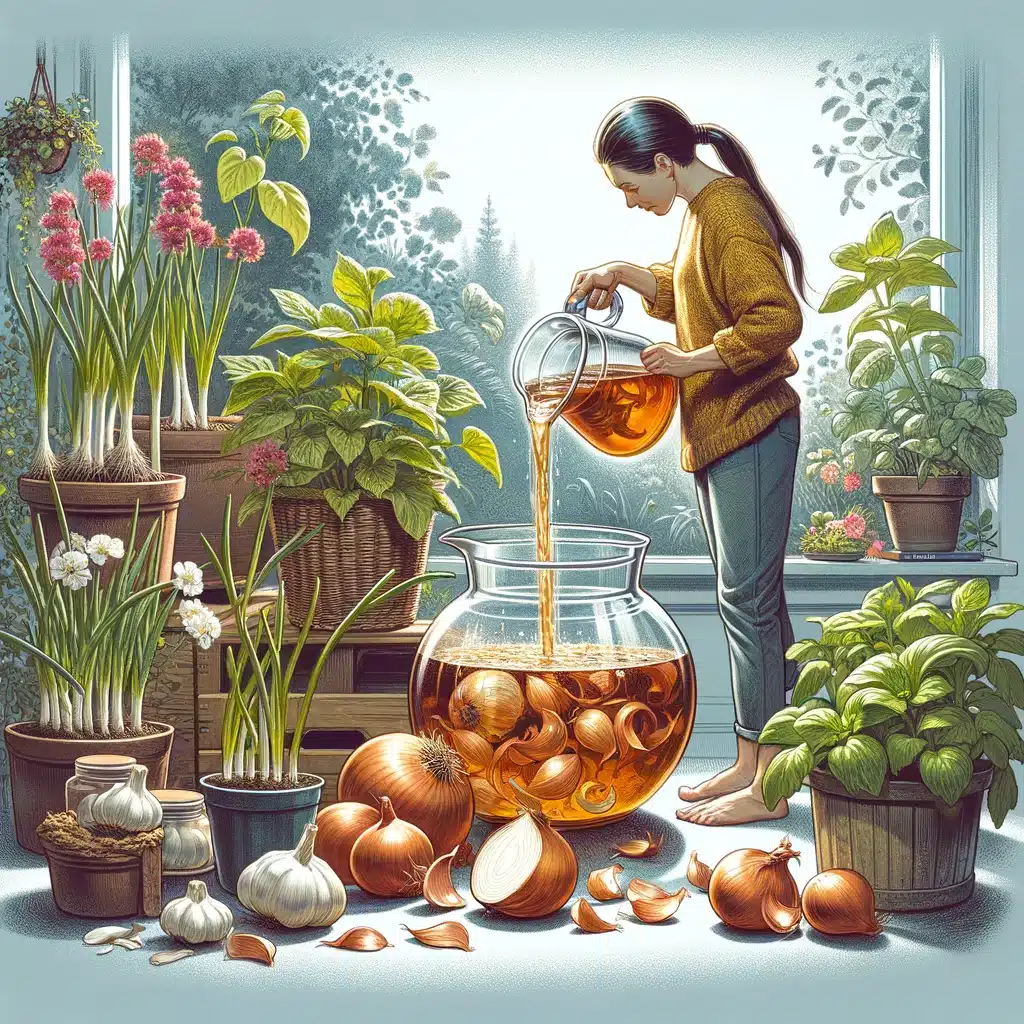
🍲🧙♀️Recipes and Preparation
To make onion and garlic peel tea, simply collect the outer peels, steep them in boiling water, and let the mixture cool down. Strain the liquid and use it to water your plants or as a foliar spray.
🔬What Does Science Say?
Onion and garlic peels are rich in sulfur, a key nutrient that helps plants resist disease and form important proteins. Sulfur can also help in the formation of certain vitamins. The antimicrobial properties of both onion and garlic can help deter pests.
⚖️Verdict: Plausible
Using onion and garlic peel tea could be beneficial for plants needing a sulfur boost or those susceptible to certain pests. However, it’s important to use this tea sparingly to avoid potential soil imbalances.
🌱Best Suited for:
- Sulfur-Loving Plants: Such as legumes (beans and peas), cruciferous vegetables (kale, cabbage), and alliums (additional onions and garlic in your garden).
- Plants Prone to Pests: The natural repellent properties can help protect vulnerable plants.
- Houseplants: Particularly those that benefit from the antimicrobial properties, like Spider Plants and Peace Lilies, to prevent fungal diseases.
🍲✅Proper preparation and use
- Dilution is Key: Always dilute the tea with water (a ratio of 1:5 is a good start) to avoid overwhelming your plants with strong compounds.
- Frequency: Use once a month or less frequently, observing your plants’ response.
❌What could go wrong?
- Overuse: Can lead to sulfur excess, potentially inhibiting plant growth.
- Wrong Plants: Not all plants will appreciate the strong compounds or the sulfur boost.
- Soil pH Impact: Frequent use might slightly acidify the soil, affecting pH-sensitive plants.
This tea offers a natural way to boost plant health and deter pests, but like all homemade remedies, it should be used as part of a balanced care regimen.
Examples of plants you should avoid using onion peel brew: orchids, African violets, ferns, seedlings and young plants, acid-loving plants.
🍂Compost Tea: A Natural Boost for Your Houseplants

🗣️Claims
Gardeners and plant enthusiasts often praise compost tea for its ability to provide a wide range of nutrients and beneficial microorganisms to plants. It’s said to improve soil health, enhance plant growth, and even suppress diseases.
🍲🧙♀️Recipes and Preparation
To make compost tea, you’ll need a small amount of compost, water, and optionally, an air pump to aerate the mixture. Simply steep the compost in water for 24 to 48 hours, stirring occasionally. If you’re aerating, the process can be faster. Strain the mixture, and it’s ready to use. Dilute the tea with water (about 1 part tea to 10 parts water) before applying it to your plants.
🔬What Does Science Say?
Compost tea introduces beneficial bacteria and fungi from the compost into the soil, which can help with nutrient uptake and disease suppression. The nutrients in compost tea are in a form that’s easily accessible to plants, promoting healthy growth. However, the effectiveness can vary based on the quality of the compost used and the brewing method.
⚖️Verdict: Confirmed
Compost tea is a proven way to boost plant health, provided it’s made and used correctly. It’s especially beneficial for plants that thrive in nutrient-rich soil.
🌱Best Suited for:
- Tropical Houseplants: Many tropical plants benefit from the nutrient boost and improved soil health provided by compost tea.
- Vegetable and Herb Gardens: Edibles often show significant growth improvement with the application of compost tea.
- Plants in Poor Soil: If your soil is lacking in nutrients, compost tea can be a great way to enrich it without resorting to chemical fertilizers.
🍲✅Proper preparation and use
- Dilution is Key: Always dilute compost tea to avoid overwhelming your plants with nutrients.
- Regular Application: Applying compost tea every 4-6 weeks during the growing season can promote vigorous growth.
- Quality Matters: Use high-quality, well-aged compost to brew your tea for the best results.
❌What could go wrong?
- Overuse: Just like with any fertilizer, too much compost tea can lead to nutrient imbalances.
- Disease Transmission: If the compost used is not fully decomposed or contains pathogens, there’s a risk of introducing diseases to your plants.
- Oxygen Levels: Non-aerated teas can become anaerobic, which might harm plant roots and soil health.
Compost tea is a versatile and organic solution that can significantly benefit your garden and houseplants. Just remember to use it as part of a balanced care regimen.
🧂Epsom Salt: Magnesium Magic or Just a Myth?
🗣️Claims
Epsom salt is often recommended for everything from improving seed germination and leaf greening to enhancing flower production and even pest deterrence.
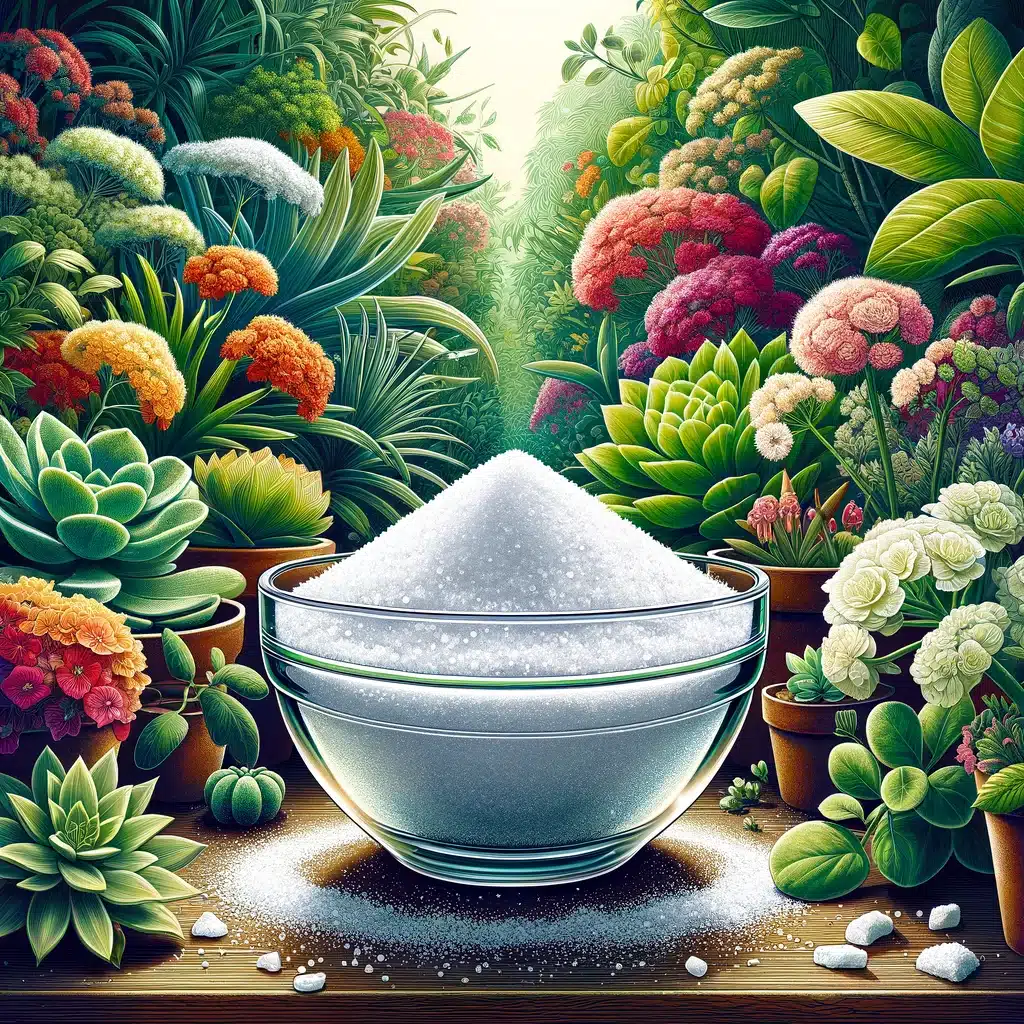
🍲🧙♀️Recipes and Preparation
To use Epsom salt for plants, dissolve about one tablespoon in a gallon of water. This solution can be applied directly to the soil or used as a foliar spray.
🔬What Does Science Say?
Epsom salt is a source of magnesium, essential for plant health, particularly for chlorophyll production and seed germination. However, its effects vary depending on soil conditions and plant needs. While magnesium can indeed support plant health, especially in magnesium-deficient soils, the claims of pest deterrence and universally boosted blooming are not strongly supported by scientific evidence.
⚖️Verdict: Plausible
Epsom salt can aid plants that lack magnesium, but its benefits are specific and not universal. The idea that it deters pests or significantly boosts blooming lacks robust scientific backing.
🌱Best Suited for:
- Houseplants with Yellowing Leaves: A sign of magnesium deficiency.
- Roses: Can benefit from magnesium for healthier growth.
- Tomatoes and Peppers: These often show signs of magnesium deficiency and can improve with Epsom salt.
- Gardenias and Ferns: Acid-loving plants that thrive with a magnesium boost.
🍲✅Proper use
- Check Soil First: Only add Epsom salt if your soil is deficient in magnesium.
- Use as a Supplement: It’s best used as part of a broader fertilization plan, not as the sole nutrient source.
❌What could go wrong?
- Overuse: Can lead to nutrient imbalances, with too much magnesium potentially inhibiting the uptake of other essential nutrients.
- Soil Type Matters: Not all soils need additional magnesium. Adding Epsom salt to magnesium-rich soil can do more harm than good.
While Epsom salt can address magnesium deficiencies effectively, it’s not a miracle solution for all plant issues. Its use should be targeted and based on the specific needs of your plants and soil.
🍌🐣☕️One Brew to Feed Them All
Having investigated the unique benefits of popular home remedies for plant food, we can take things up a notch. Let’s explore how we can mix and match various kitchen staples to whip up a balanced, eco-friendly plant food right at home. The goal is to find a combination where each ingredient complements the others, creating a versatile concoction that’s beneficial for a wide range of houseplants.
Balanced Kitchen Brew for Plants
Ingredients:
- Banana Peels: Rich in potassium, essential for overall plant health and flower development.
- Eggshells: Provide calcium, which strengthens plant cell walls.
- Coffee Grounds: Offer a slight nitrogen boost, improve soil structure, and help with water retention.
- Epsom Salt: Supplies magnesium and sulfur, important for chlorophyll production and enzyme activation.
- Aquarium Water (if available): Contains beneficial bacteria and nutrients like nitrogen and phosphorus.
- Rice or Pasta Water (cooled and unsalted): Adds starches that beneficial microbes can feed on, enhancing soil health.
Preparation:
- Banana Peels: Dry and grind the peels into a powder.
- Eggshells: Wash, dry, and grind into a fine powder.
- Coffee Grounds: Use fresh or dried grounds.
- Epsom Salt: Ensure it’s pure magnesium sulfate without added fragrances or chemicals.
Brew:
- Mixing: In a large container, combine:
- 1 part ground banana peels
- 1 part ground eggshells
- 1 part coffee grounds
- A teaspoon of Epsom salt per gallon of mixture
- If available, replace some of the water with aquarium water for added nutrients.
- Use rice or pasta water as part of the liquid base for added microbial benefits.
- Steeping: Add the mixture to a bucket of water (preferably rainwater or dechlorinated tap water) at a ratio of 1 cup (approximately 250 ml) of solid mixture to 1 gallon (about 4 liters) of water. Let it steep for 24-48 hours, stirring occasionally.
- Straining: Strain the mixture to remove solids, leaving you with a nutrient-rich liquid.
- Dilution: Dilute the concentrated brew with water at a 1:10 ratio before use.
- Application: Water your plants with this brew every 4-6 weeks during their growing season. It’s suitable for a wide range of plants, especially those grown indoors or in containers, providing a gentle, balanced supply of essential nutrients.
Note:
- This brew is a supplement, not a replacement for a comprehensive plant care routine that includes proper lighting, watering, and soil management.
- Always observe your plants’ reactions to any homemade concoction and adjust your practices accordingly.
This balanced kitchen brew offers a simple, eco-friendly way to provide your plants with a variety of nutrients, promoting healthy growth and vibrant blooms.






